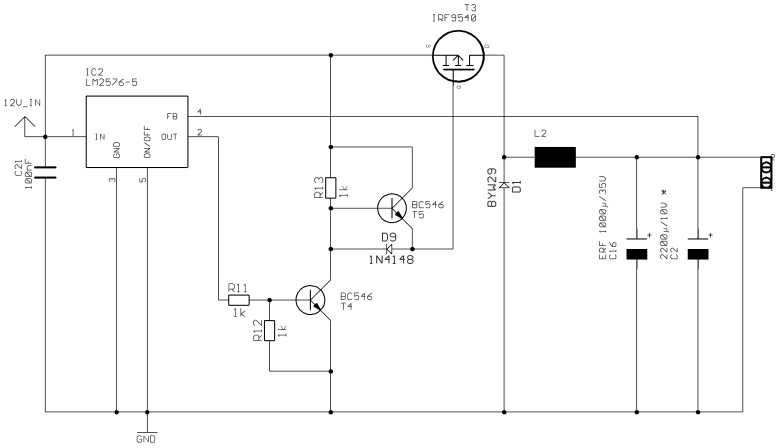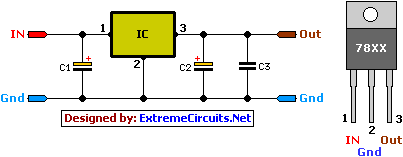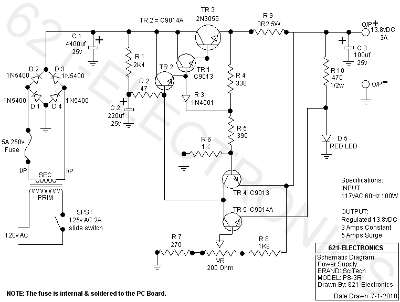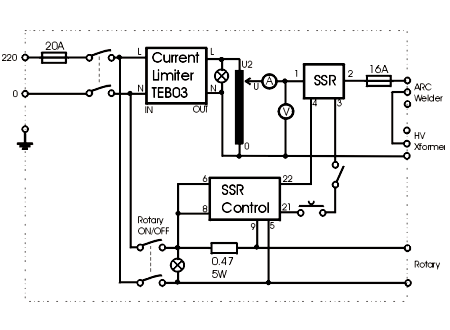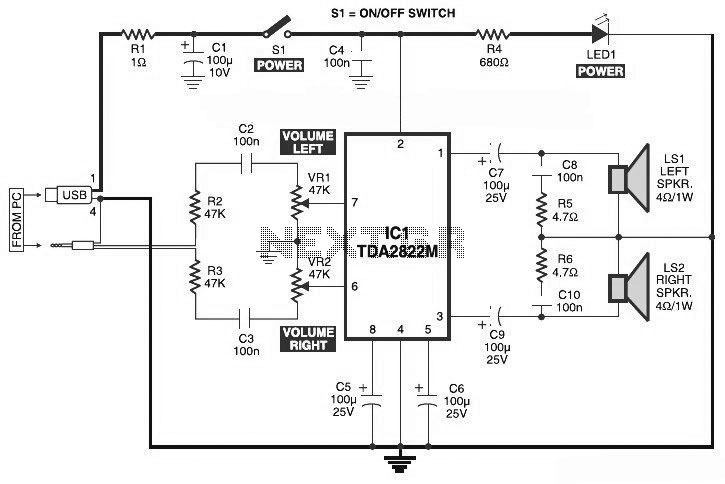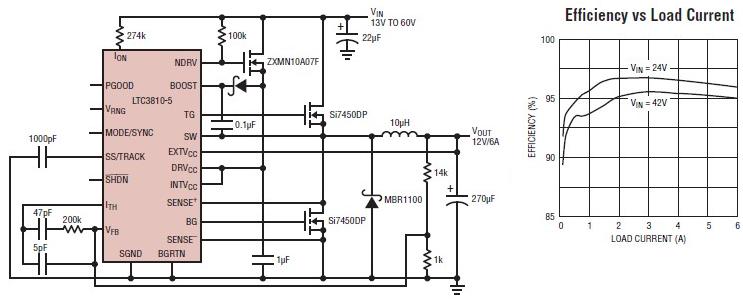
1.3V Power supply

This 1.3V power supply can serve as a replacement for the 1.3V Mercury Cell in any circuit. When a 5V input is applied to the circuit, the voltage drop across the Zener diode D1 will be approximately 2V. The diode D2 will further drop about 0.7V from the 2V, resulting in a remaining output voltage of 1.3V. The resistor R1 limits the current flowing through the Zener diode.
The described power supply circuit is designed to provide a stable 1.3V output, suitable for applications where a 1.3V Mercury Cell is typically used. The circuit operates by utilizing two diodes, D1 and D2, to achieve the desired voltage drop from a higher input voltage of 5V.
In this configuration, D1 functions as a Zener diode, which is designed to maintain a constant voltage across it when reverse-biased. When the 5V supply voltage is applied, the Zener diode D1 will clamp the voltage to approximately 2V. This is a critical step as it ensures that the voltage does not exceed the breakdown voltage of the subsequent components.
Following D1, diode D2 is placed in series and is responsible for an additional voltage drop of approximately 0.7V. This drop is typical for silicon diodes and is necessary to further reduce the voltage to the desired 1.3V output level. The output voltage is then taken across the load connected to the output terminals of the circuit.
Resistor R1 plays a vital role in this circuit by limiting the current flowing through the Zener diode D1. It is essential to choose an appropriate value for R1 to ensure that the Zener diode operates within its specified current range, preventing damage due to excessive current. The resistor value can be calculated based on the desired output current and the total voltage drop across the resistor, considering the input voltage and the combined voltage drops across D1 and D2.
Overall, this 1.3V power supply circuit is a practical solution for replacing mercury cells, providing a reliable and efficient power source for low-voltage applications. Proper component selection and circuit design considerations will ensure optimal performance and longevity of the circuit.This 1. 3V power supply can be used as replacement for the 1. 3V Mercury Cell in any circuit. When the input 5V is given to the circuit, the voltage drop across zener diode D1 will be around 2V. The diode D2 will drop a 0. 7 V from the 2V volt and the remaining 1. 3V will be available at the output. The Resistor R1 limits the current through Zener diod e 🔗 External reference
The described power supply circuit is designed to provide a stable 1.3V output, suitable for applications where a 1.3V Mercury Cell is typically used. The circuit operates by utilizing two diodes, D1 and D2, to achieve the desired voltage drop from a higher input voltage of 5V.
In this configuration, D1 functions as a Zener diode, which is designed to maintain a constant voltage across it when reverse-biased. When the 5V supply voltage is applied, the Zener diode D1 will clamp the voltage to approximately 2V. This is a critical step as it ensures that the voltage does not exceed the breakdown voltage of the subsequent components.
Following D1, diode D2 is placed in series and is responsible for an additional voltage drop of approximately 0.7V. This drop is typical for silicon diodes and is necessary to further reduce the voltage to the desired 1.3V output level. The output voltage is then taken across the load connected to the output terminals of the circuit.
Resistor R1 plays a vital role in this circuit by limiting the current flowing through the Zener diode D1. It is essential to choose an appropriate value for R1 to ensure that the Zener diode operates within its specified current range, preventing damage due to excessive current. The resistor value can be calculated based on the desired output current and the total voltage drop across the resistor, considering the input voltage and the combined voltage drops across D1 and D2.
Overall, this 1.3V power supply circuit is a practical solution for replacing mercury cells, providing a reliable and efficient power source for low-voltage applications. Proper component selection and circuit design considerations will ensure optimal performance and longevity of the circuit.This 1. 3V power supply can be used as replacement for the 1. 3V Mercury Cell in any circuit. When the input 5V is given to the circuit, the voltage drop across zener diode D1 will be around 2V. The diode D2 will drop a 0. 7 V from the 2V volt and the remaining 1. 3V will be available at the output. The Resistor R1 limits the current through Zener diod e 🔗 External reference
